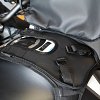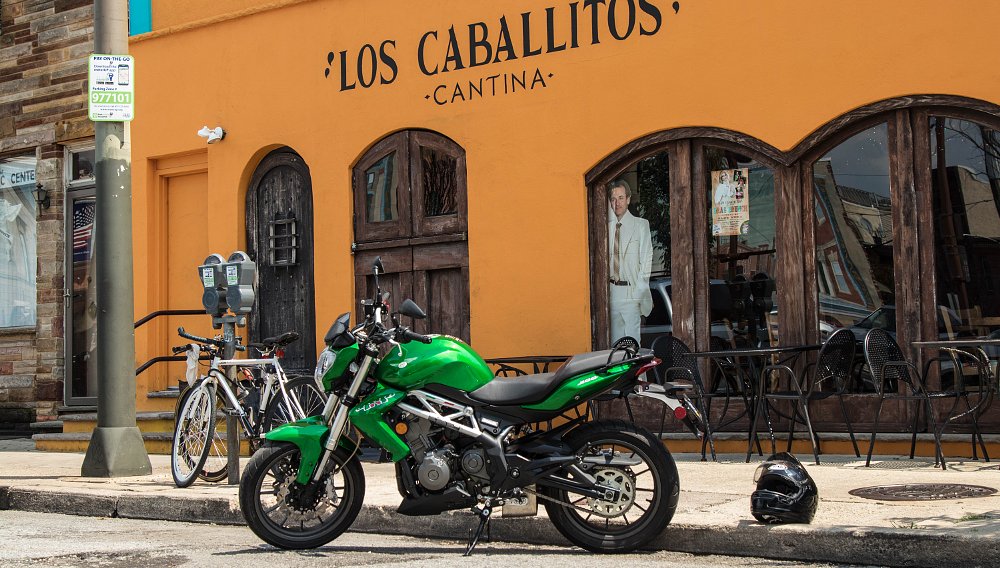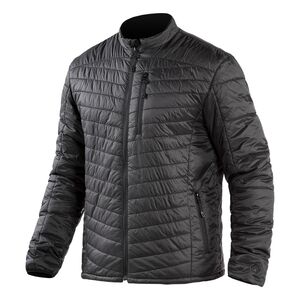By now, you’ve probably read or seen a review of the Benelli TNT 300. To most riders, it seems like a fun little machine, mostly known for its low price tag, that's good for zipping around an urban environment. But could it be more than that?
Can it be used for more than errands around town and short commutes? Is this bike, costing just $3,999 brand new, capable of tackling long stretches of road where you might be averaging 70 mph on the highway for a few hours? Welp, we’re about to find out.
I’ve been shooting a fair amount of “Ride Tested” videos lately and every time I've used the Benelli, it would get a lot of attention. Viewers asked me how I liked it or if it was just a pile of junk. (Of course, this was on YouTube and we all know how the comment section on YouTube can be, so let’s just say the questions were not always that... uh, polite.) Regardless, I thought it would be a great opportunity to put the Benelli to the test with a road trip and see how it performs beyond the city limits.
There were a few things that I expected and were confirmed during my trip, but I also encountered a few surprises. Before we get into that, let’s start with the first thing any rider has to do before a long weekend trip: loading up the bike.
With any motorcycle that’s not necessarily a touring bike, packing can take a bit of finagling. I typically load everything up on the tail section of the bike first. If I run out of room, I start loading up a tank bag. First thing I noticed when loading up the Benelli was the lack of anchoring points on the tail section. Of course, this bike wasn’t exactly designed with touring in mind, so I wasn’t too surprised. Fortunately, I was able to secure everything I needed with a combination of bungies and Rok Straps.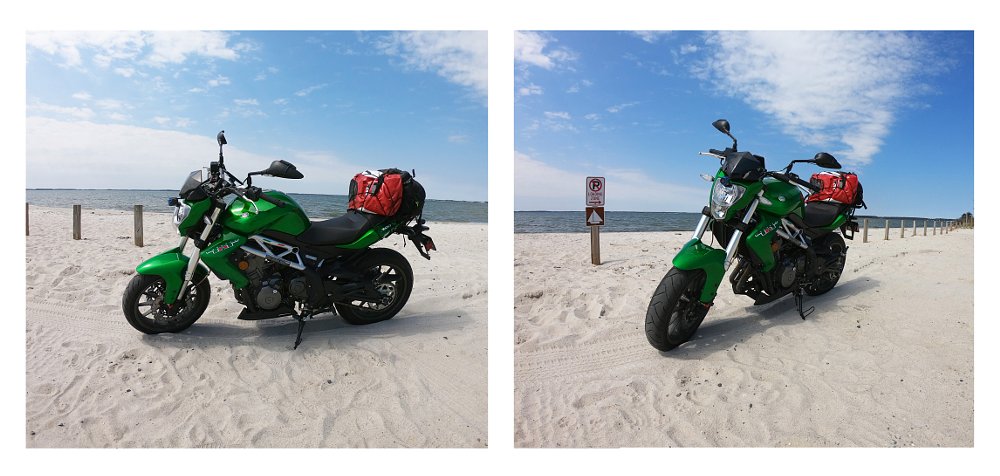
The Benelli's metal tank means a magnetic tank bag would be an option but in this case I was able to get my sleeping bag, one-man tent, an overnight bag, computer, and some tools strapped to the tail and I was ready to hit the road.
Like most of my moto road trips, I didn’t really have too much of a plan. I generally pick out where I’m going to sleep that evening and then poke around for some routes along the way that look scenic and twisty. Luckily, the REVER app made that pretty easy and I was able to add stops at locations I thought might be interesting to check out.
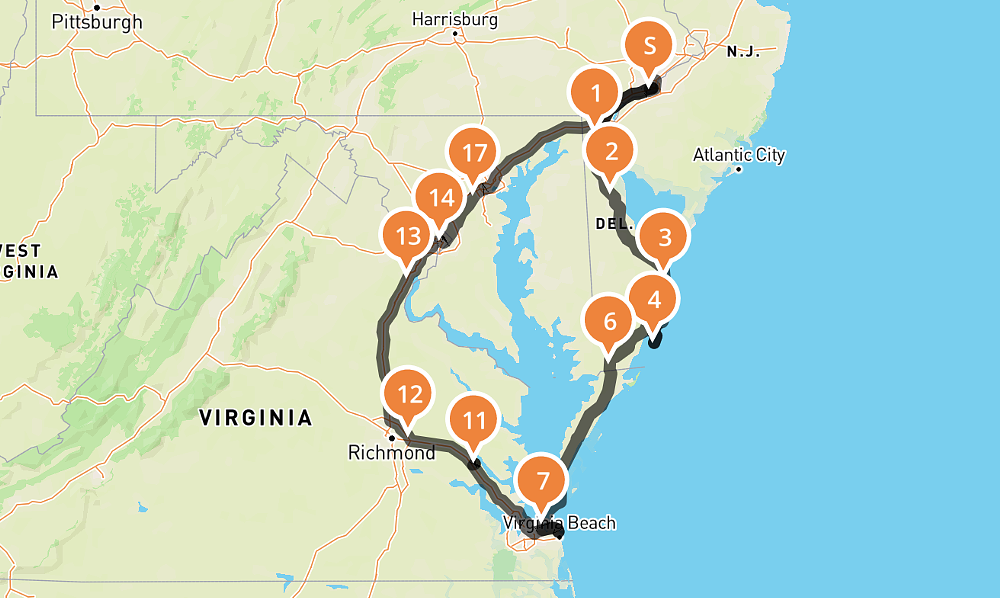
Though I’m just now getting around to writing this article, I took this trip towards the beginning of April and therefore it was still a bit chilly for a moto trip. For that very reason, I decided to make my way south for some warmer temperatures. I really like Richmond, Virginia and I was able to find a KOA campsite that wasn’t too far away, so that’s where I headed.
While the point of this trip was to put down some serious miles on the highway and country back roads, I didn’t want to just haul it on Interstate 95 for four hours at 8 a.m. I decided to ride along the coast a bit and stretch the Benelli’s legs, so to speak. Getting there did mean leaving Philadelphia on I-95, however, and after about 30 minutes headed south on the highway I had some concerns.
If you’re not aware, a 55 mph speed limit on I-95 around Philadelphia means you'd better be doing 70 just to keep up with the flow of traffic. Don’t get in that far left lane unless you're doing at least 80 mph. While that might be a bit of an exaggeration, it’s not too far off.
I quickly learned to plan my lane changes far in advance. The Benelli has no acceleration of any kind above 60 mph and everything above that felt desperate, especially after I loaded it up with a few extra pounds. This put me in a few pickles right out of the gate. Typically, if I’m about to be wedged between two 18-wheelers or I simply need to get out of a sticky situation quickly, I just downshift and give it the beans, or “drop a gear and disappear,” as the cool kids like to say. Unfortunately, this is not really an option with the Benelli.
You could easily argue that this is the case for most smaller displacement machines, too, and I wouldn’t disagree, but I remember riding the Kawasaki Ninja 300 quite a bit and it didn’t feel as lacking in pep at highway speeds. Nonetheless, I kept on trucking and made the mental note to plan my lane changes in advance.

During the first leg of the trip, I stopped at a few little scenic spots in Delaware to check out the beaches and continued making my way south. When I was planning my route on REVER, I noticed a skinny little island that seemed like it would be fun to check out on the bike. When I got there and saw a pony on the side of the road and then a bunch of random horses scattered in the parking lot, I was a bit confused.
At this point, I started googling the signage I was seeing and it turns out I ended up at the Assateague Island National Seashore, which I quickly learned is a protected area on a long barrier island off the coast of Maryland and Virginia. Part of the island is the Chincoteague National Wildlife Refuge, which is home to wild Chincoteague ponies, bald eagles and migratory seabirds. So that explained why I spotted a random pony in the road and why everyone was acting very normal about horses not being tied up to anything and just walking around the parking lot like they’re shopping for a new car. And that, my friends, is one of the many reasons why taking random weekend moto trips is always a good idea. You never know what you’re going to stumble upon along the way. Well, unless you do proper research ahead of time and choose destinations along the way like normal people, instead of like me.
Seeing wild horses on the beach was probably my favorite part of the trip but my next favorite part was simply riding across the Chesapeake Bay Bridge.
I’ve never ridden across a bridge this long in my life and I couldn’t get over how far out in the middle of the water it felt. Once I hopped on the bridge, I couldn’t see the other side of it nor could I see where land actually started again. And while I absolutely loved it, at one point I did think to myself “Man, I probably should have stopped for gas earlier.”
While I was having fun riding down the coast, I began making a lot of mental notes about how the bike was handling and noting the things I did and didn’t like. So let's go through my list of notes on the Benelli TNT 300.
Ergonomics
The Benelli’s cockpit is very comfortable and feels like your typical sport-touring machine: not very aggressive but still has a little bit of that sport bike “I’m riding on the front tire” feeling.
The seat was surprisingly comfortable, too. Given the price point, I was honestly expecting it to suck a bit more. The first day, I rode from 8 a.m. until about 6:30 p.m. and my biscuits were just a little sore. I recently rode the new Indian Chief a fair amount and I couldn’t go more than 30 minutes without my biscuits burning. For reference, I’m five feet, 11 inches tall, weigh 170 pounds and like my eggs scrambled in the morning. Ultimately, I think the average Joe (including Zito) will be nice and comfy with the Benelli’s riding position.
The controls feel very meh. They’re fine, but very basic, and pretty much on par with what you’d expect from a machine around this price point. The handlebar buzzes and you start to feel that pretty quickly on the highway. And forget about using the mirrors for literally anything above 30 mph. The positioning is fine for my height but they vibrate so much that all you can see in them are fuzzy blobs that you presume are motor vehicles.
I’m sure a better set of grips and better bar-end weights could help out with that. In conclusion, everything works, but it doesn’t feel very refined. Again, I wasn't too surprised by this given the price point.
Engine performance
Speaking of fuzzy blobs, the check engine light came on at some point in the trip but it was so faint that I didn’t even notice it until I turned on the bike early in the morning to warm it up for the trip home. The Benelli continued to run fine, so I pressed on. The fuel gauge also seemed to be a bit temperamental. At one moment I would have three bars of fuel left and then it would jump to four and then five and then back down to three. So I never let the fuel get below two bars on the gauge just in case the readings were way off.
I already covered the limitations at highway speed above. The TNT 300 works best on slower paced roads.
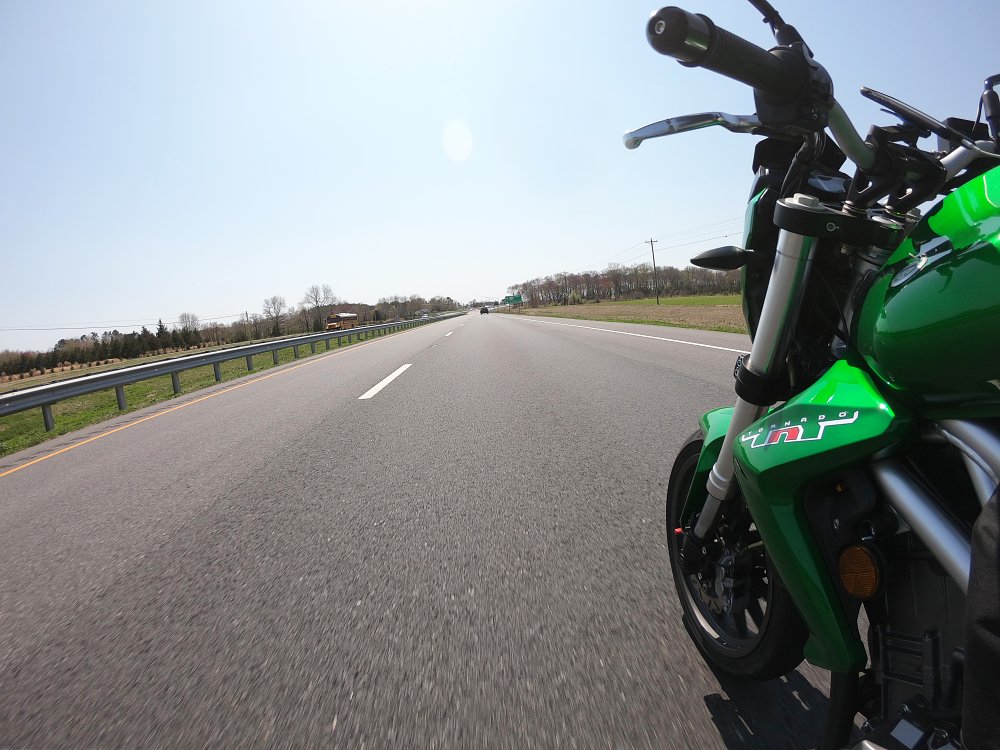
Brakes and suspension
One thing I was pleasantly surprised by were the brakes. You've got dual discs up front, which is a whole extra disc compared to a lot of alternative options around this price. No ABS, of course, which means I had a good time hammering that rear brake and sliding around for a bit of fun. Am I the only one who gets mad at bikes that don’t allow you to turn off the ABS? I love sliding the rear. Makes me feel like I’m a kid again back on my BMX bike being a menace. Yes, I’m aware it’s just ruining the tire and I don’t care!
At any rate, they were very progressive and although they lacked that strong initial bite, when I needed to stop, I was able to do so with ease.
The suspension felt a bit like mashed potatoes but it always handled the pothole-riddled streets of Philadelphia fairly well, so the highway felt like a breeze in that regard. While it may not be the best suspension I’ve used, it felt planted and stable enough for me to feel comfortable pushing it a bit on those twisty back roads.
Weight
Generally speaking, I’m not too concerned with a bike's overall weight. I’ve ridden a lot of different machines, from Kawasaki KE100s I can literally pick up and walk around with to 1,000-pound Harley-Davidson Street Glides that might as well be a car. From my experience, once you’re above those crawling parking lot speeds, you don’t really notice the weight too much and I think that holds true for the TNT 300. With that said, just to give you some frame of reference, the Kawasaki Z400 is about 363 pounds, the Ninja 300 rings in around 383 pounds and the TNT 300 tips the scales at 432 pounds. I wonder how much zippier the Benelli would feel if it could shed an extra 50 pounds.
So how did the Benelli fare for a long weekend trip?
I finally made my way to the KOA campsite on the first day of the trip and wrote down a few of the thoughts I had while they were still fresh in the ol' noodle.
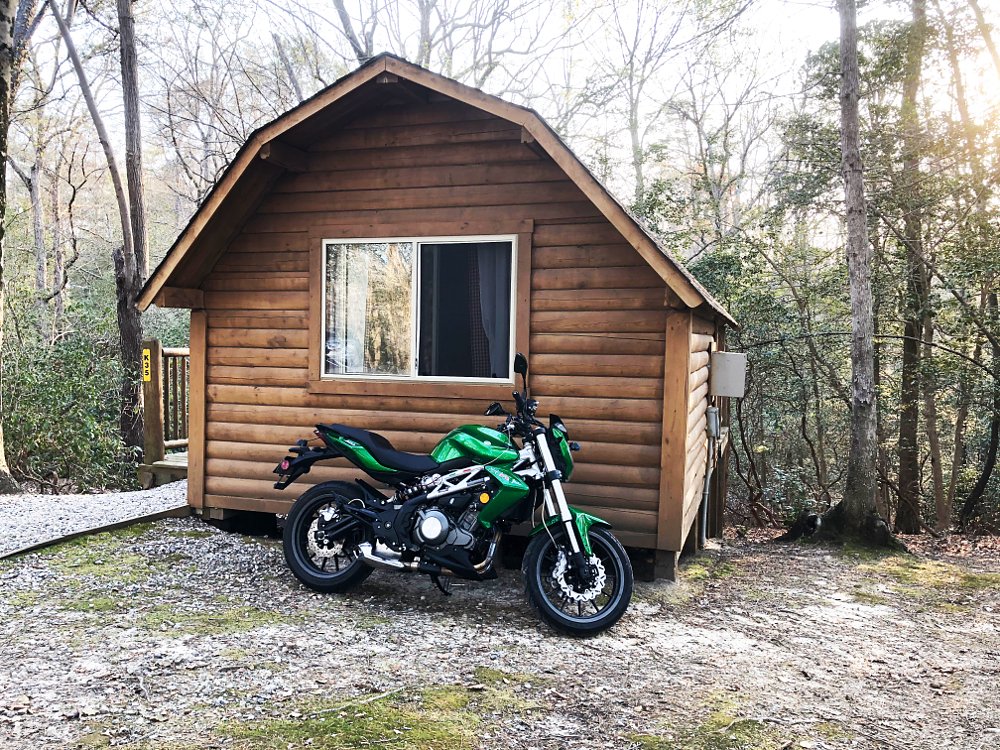
Overall, the Benelli got me to my destination and I rode for a solid seven hours or so, zigging and zagging my way to get there. The bike got the job done, but I would have had a lot more fun and I would have felt safer on the highway on a different machine. I say "safer," because when you’re riding at highway speeds in three lanes of fairly heavy traffic, sometimes having a bit of power to get out of a situation is nice to have. You might think you can always slow down a bit, but when you’ve got people right behind you on their cell phones not paying attention, sometimes slowing down or braking isn’t the best solution.
The point is, when I think about spending $4,000 on a bike, I just think of the laundry list of used bikes I could scoop up instead.
My first bike was a 1996 Suzuki GS500E that cost me about $1,400 and it was more capable than the Benelli TNT 300. I also treated that bike very poorly and it would not stop running. I swear you could have dumped sand down the gas tank and if the bike could talk it would go something like, “Welp, OK… guess we’ll have to make this work.”
Currently, my daily commuter is a 2013 Triumph Thruxton that I picked up for $3,000 with 25,000 miles on the clock. I’ve done many trips to North Carolina, Tennessee, Virginia and back without a single hiccup. I’ve also seen plenty of used Suzuki SV650s on Facebook Marketplace and Craigslist that I would choose or recommend a thousand times before the Benelli, novice rider or not.
If you must have something brand spanking new, the Kawasaki Z400 has an MSRP of $4,999. That’s just $1,000 more than the Benelli for a much more capable bike. You’re getting anti-lock brakes, more power, lower weight, a better dealer network, better highway handling and it doesn’t look like a Heineken beer can of a motorcycle.
While the Benelli technically did the job for my weekend trip, with the check engine light coming on and the bike feeling seriously underpowered at speeds above 55 mph, it’s not a bike I could feel confident recommending to anyone who might plan on using it for more than jaunts around town. I’m all about using the wrong bike for the job, like Zito racing a vintage Triumph with four inches of suspension travel in the dirt or simply doing things with motorcycles people tell you not to do.
But despite the TNT 300's low price tag, the next time I take a weekend trip, I'm going to seek out a better tool for the job.






